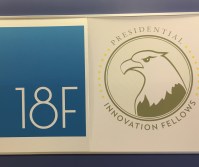Agencies can learn from 18F’s ‘remote-first’ mindset during coronavirus pandemic

Agencies preparing their employees for telework during the coronavirus pandemic should take stock of remote work enterprise tools already approved by the Federal Risk and Authorization Management Program, according to federal digital services experts.
Google G Suite, Slack, Zoom, and Cisco Webex Meetings and Secure Cloud for Defense have all been FedRAMP authorized to some degree, and many agencies are already paying for them.
When agency leadership is resistant to telework, employees should do their homework to determine if software is free or can bill the agency as a service — lowering the cost of entry and reducing paperwork by coming in below procurement thresholds. The FedRAMP product list shows software that can be secured at low or no cost.
“It really is an easy way to prove to your leadership team that these things are well-vetted and approved and aren’t going to cause big security problems,” said Robin Carnahan, former director of state and local practice at 18F, during a virtual Code for America summit Thursday.
The digital services consulting group within the General Services Administration’s Technology Transformation Services, 18F has always had a “remote-first” mindset, Carnahan added.
“We would have people call in with the video on their screen and then approach it like you would any other technical thing that has to work for humans,” said Leah Bannon, a former 18F employee who now serves as VA.gov product manager at the U.S. Digital Service. “So we would test it out.”
That kind of iteration is needed at agencies new to telework, Bannon added.
Over the weekend, the Office of Personnel Management issued guidance to agencies encouraging them to update their Continuity of Operation Planning plans to fully incorporate telework.
“Agencies should immediately review their current telework policies and ensure that written telework agreements are in place for as many employees as possible,” reads the memo.
The social distancing required as the coronavirus that causes COVID-19 spreads is an unfamiliar phenomenon in the U.S. and will necessitate “more deliberate communication” as employees increasingly work from home — making “water cooler” conversations impossible, said Laura Lanford, vice president of engineering at Nava Public Benefit Corporation.
Nava emphasizes consistent, structured one-on-one video conferences with employees consisting of standardized feedback questions.
“We know that their lives have been more variable than they would under more normal circumstances,” Lanford said.
Sometimes a day off is needed to prevent weeks or months of burnout because “it’s really easy to just keep working because it’s right there,” said Mark Ferlatte, chief technology officer at Truss.
The software company enforces a strict 40-hour workweek for that reason, Ferlatte added.
When a more casual, personal meeting is necessary, virtual coffee bots can set up chats or even happy hours.
At agencies that have experimented with telework, ramping that up will not take much work. Even where that’s not the case, most agencies already have a policy-making expansion possible, Carnahan said.
Employees’ lack of access to high-speed internet poses a longer-term problem, but agencies can turn on government-issued phones’ hotspotting capability in the immediate, she added.
“What this forces, in terms of management, is prioritization about what work is important and what outcomes and what timelines,” Carnahan said.






